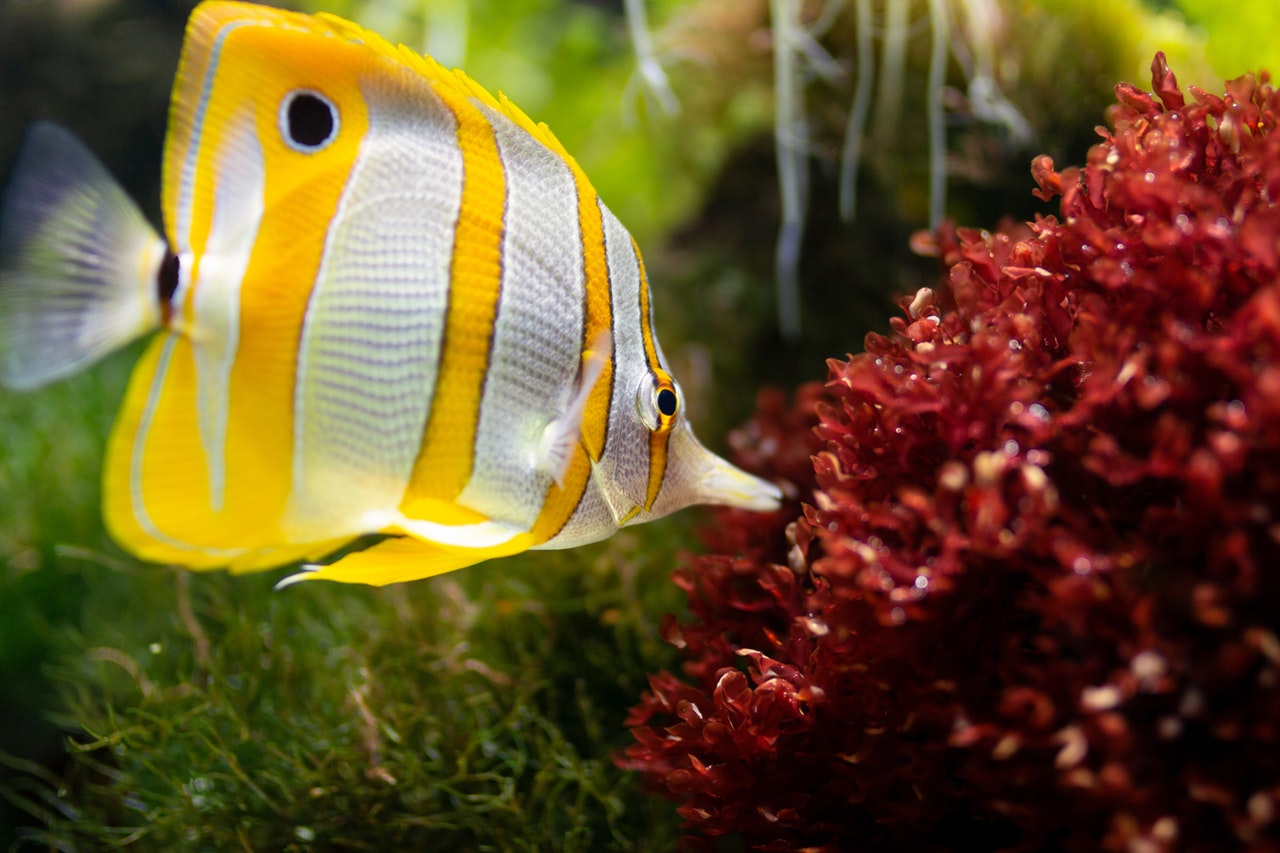
You might be wondering why fish need all those plants in the tank. Are they just for decoration or do they serve a higher purpose? Research indicates that live plants are much more than decoration for freshwater fish. In fact, studies revealed that the majority of freshwater community aquarium fish prefer live aquarium plants to their plastic counterparts. These have the capability of mimicking their natural habitat more effectively. Just like humans, fish are littered with emotions and emotional stimuli and live plants assist fish with many tasks. Take for example a well-planted aquarium. Fish found in here can find shade from glaring light, privacy from things outside of the tank that startle them and a natural safety in times of stress. Live plants allow smaller, shyer fish to evade larger or aggressive tank mates or over-eager potential breeding partners. For shoaling fish, live aquarium plants give the group the currents and eddies they instinctively seek out in the wild. Hence why we should not neglect the addition of live plants in our aquarium tanks.
Caring for live plants
In order for live plants to thrive and be at their optimal health there are three main pylons. Firstly, sufficient lighting. After all they are plants and are autotrophic organisms that require sun light to eat and perform the majority of their functions. Just remember, the deeper the tank the stronger the lighting system needed. At Guppy’s our members of staff are well educated and provide you the necessary knowledge. Secondly, we need to ensure that the proper substrate is being utilised, as it keeps live plants anchored and administers a fertile area for root growth. Fine gravel, specifically designed terracotta gravel, or sand works best for a live plant environment. Never think about using dirt or pond mud, as the bacteria found in them, if unsterilized, are detrimental to the fish’s life. Thirdly, just like the fish need food, so do the live plants. To provide sufficient food for the live aquarium plants, a well-established freshwater aquarium will have some nutrients in the substrate. A new aquarium must be supplemented with live aquarium plant food which is widely available. Even well-established aquariums should be supplemented with extra nutrients for maximum benefit to the community aquarium as a whole. All our tanks here at Guppy’s Warehouse are equipped with all the features and our experts will explain every critical detail in depth with you!
Ground Cover Plants
Ground cover plants, such as Vallisneria, send out “runners” that develop into newly rooted and separate plants. These plants, once matured can be broken off and moved to other regions of the aquarium that suits and will retain their properties. These true aquatic plants are great for ground cover and should be placed in the rear of the aquarium since most species grow tall. However, they cannot tolerate a dry condition, so removing them from the aquarium should not occur as they will dry out and eventually die.
Node Propagators
Characterised by their long stringy branches that easily break off and float to the surface, node propagators are a common plant in aquariums. When a collection of branches reaches the top of the aquarium, these clusters can be anchored with a lead weight and planted into the substrate. Eventually they will grow back into a completely new plant. Myriophyllum, Ludwigia and Acorus are just some of the species that are node propagators.
Bulbs
Bulbs can be dried out from some aquarium plants and can be re-planted; dry and seemingly dead, under the substrate. Once planted and underwater, these “bulbs” will rapidly sprout and grow very fast under the right conditions and substrate salts. The Madagascar Lace is a prime example of this type of aquatic plant. These plants, also available in aquarium stores from time to time, are easy to grow, and can be and very attractive. One drawback is they have a definite season. They will grow and put out leaf after leaf from the base at a central core until finally, they produce a flower of sorts in the centre of the core. Once the flower has been produced, the plant will go into decline, establishing its dormant state. It would stay dormant through the dry season, storing its energy until the next rainy season, hence why they require more care both in and out of the aquarium environment.
The list continues with plants that can live both in and out of water, as well as aquatic plants that propagate from a seed! At Guppy’s Warehouse we take pride in providing all our clients with vital information on how to look after, maintain and choose the right plant setup for their aquarium. By nurturing and providing your fish with company, live aquarium plants tend to decorate and emit beauty from your aquarium setup. At reasonable prices you can add live aquarium plants to your aquarium orientation for added sophistication and elegance. Guppy’s Aquarium Products is Australia’s finest aquarium accessory manufacturer and takes great pride in providing immaculate services for extensive amount of years. With an abundance of aquarium products that transcend client expectation, Guppy’s Aquarium Warehouse is Australia’s finest live plant distributor.
Amazing live aquarium plants online, for amazing clients!